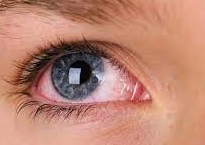 L'Sars-Cov-2 infection determines, as both data and empirical experience show, different symptoms in people who come into contact with the virus. The infection may, in fact, have a mild clinical course, with fever, a dry cough and exhaustion, or it may progress to a severe pathology, mainly affecting the respiratory system, but it may also be characterised by neurotrophism, endothelial trophism and cause a systemic inflammatory reaction, known as 'cytokine storm'. In these patients, thrombus formation can occur, which can move through the bloodstream and reach the veins, arteries and capillaries of the eye.
L'Sars-Cov-2 infection determines, as both data and empirical experience show, different symptoms in people who come into contact with the virus. The infection may, in fact, have a mild clinical course, with fever, a dry cough and exhaustion, or it may progress to a severe pathology, mainly affecting the respiratory system, but it may also be characterised by neurotrophism, endothelial trophism and cause a systemic inflammatory reaction, known as 'cytokine storm'. In these patients, thrombus formation can occur, which can move through the bloodstream and reach the veins, arteries and capillaries of the eye.
L'red eye remains, however, the most frequent ocular sign of Covid-19, in both adults and children, but on a medical-scientific level it has yet to be fully understood how and why the infection can affect and damage the ocular apparatus and in particular the retina.
Four types of retinal damage have been identified so far that can cause serious visual problems.
- Cotton wool' stains
When blood thrombi prevent nutrients from reaching the retina, the retinal tissue begins to swell and subsequently atrophies and dies. On OTC, this area appears white and fluffy like cotton wool. These neoformations, however, do not affect vision.
- "Eye stroke or retinal arterial occlusion
Blood clots can impede the flow of oxygen, causing cell death: eye stroke or retinal arterial occlusion. The most common symptom is sudden loss of vision, unaccompanied by pain.
- Retinal vein occlusion
When a retinal vein becomes blocked, blood cannot drain, the blood pressure in the eye increases, causing swelling, bleeding and loss of fluid. People with this complication can develop blurred vision and, in severe cases, sudden and permanent blindness.
- Retinal haemorrhage
It occurs when blood vessels in the retina begin to bleed, as happens in the case of a retinal vein occlusion. A haemorrhage can lead to blind spots ('holes' in the visual field) and sudden loss of vision.
Overall, few people develop serious ocular complications from Covid-19 and are generally people with risk factors such as diabetes, hypertension, circulatory abnormalities or other diseases affecting the blood vessels.
Eye problems tend to occur between the first and sixth week after the onset of Covid-19 symptoms. They affect both people who have been seriously ill with Sars-Cov-2 infection and apparently healthy people without symptoms.
This study looked at a rather limited case series (121 patients), so there is still a need for further and more research into the ocular problems that can result from Covid-19.
Source
Sagnik Sen, Naresh Babu Kannan, Jayant Kumar, et al. Retinal manifestations in patients with SARS-CoV-2 infection and pathogenetic implications: a systematic review. Int Ophthalmol. 2022; 42(1): 323-336.
